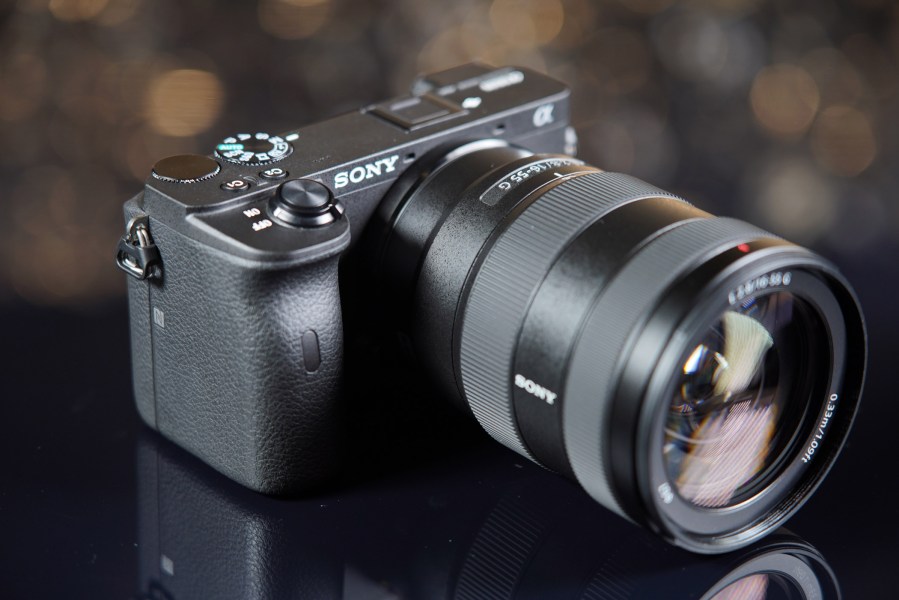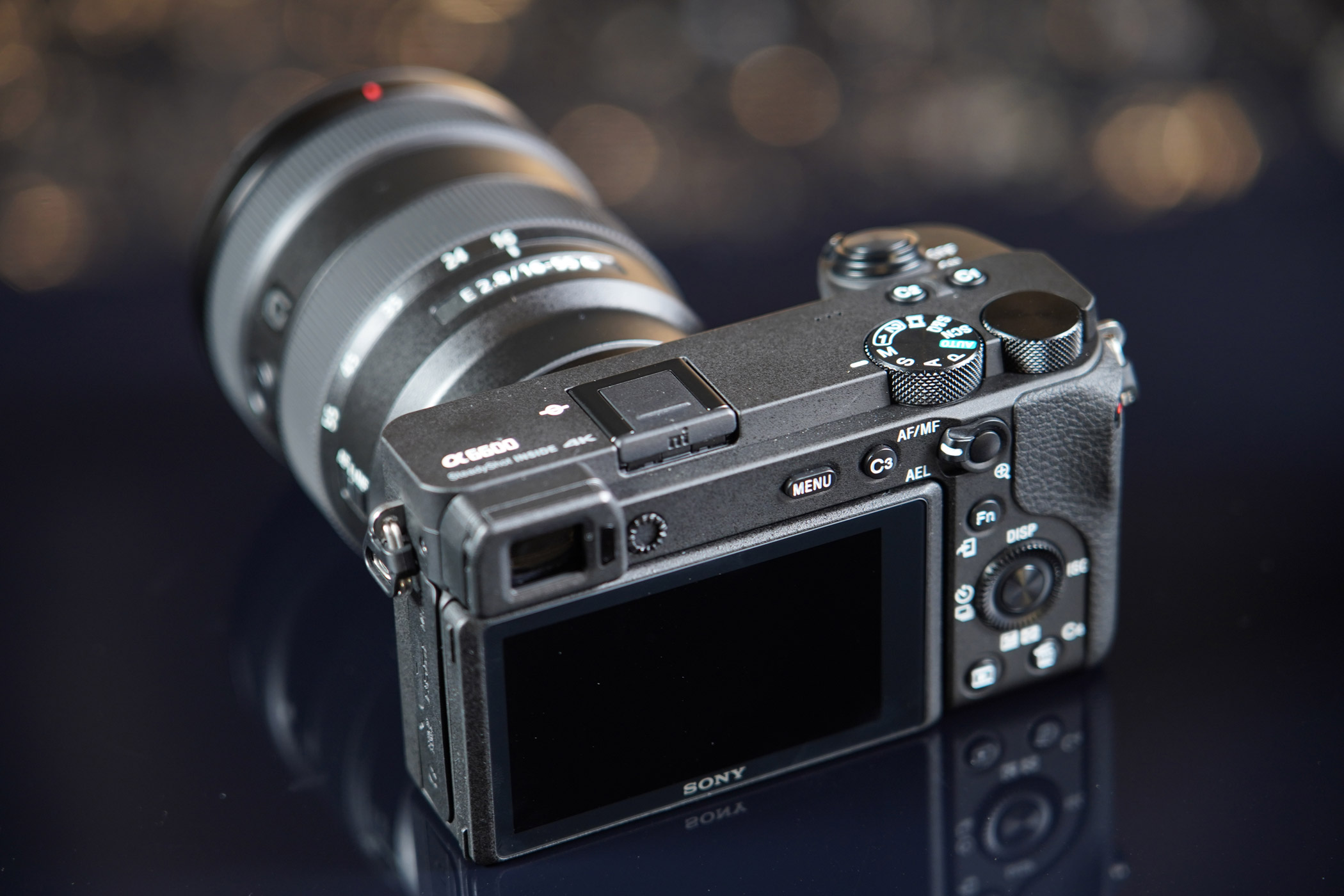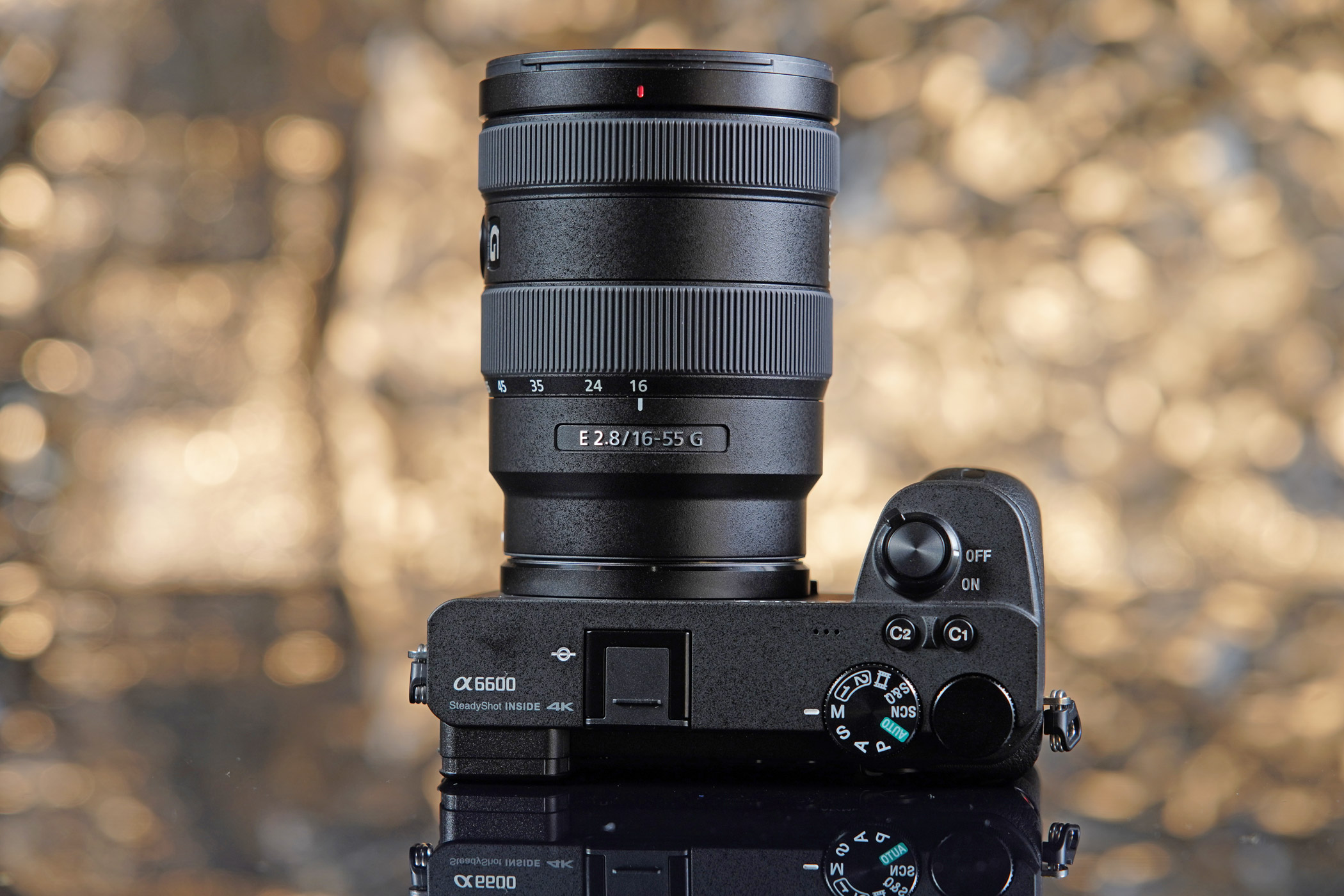Sony has revealed two new models in its Alpha 6000-series range of APS-C mirrorless models. The entry-level Alpha 6100 and high-end Alpha 6600 are updates to the current A6000 and A6500, respectively. They gain a similar set of improvements as the A6400 earlier this year, including Sony’s latest AI-based autofocus technology. Unfortunately though both retain much the same outdated body design as their predecessors, albeit with increased levels of control customisation.
Sony Alpha 6600
The Alpha 6600 is the firm’s APS-C flagship, and most clearly differentiated from its lower-end models by the inclusion of 5-axis image stabilisation. It now gains the firm’s latest AF technology, most notably real-time eye AF and real-time tracking. It also uses the Z-type battery to deliver a stamina of 810 shots per charge, which Sony touts as the best of any of its mirrorless cameras.
Headline specs include a blistering 0.02sec autofocus speed; 425 phase detection and contrast detection AF points covering 84% of the image area; 11 frames per second continuous shooting with AF and AE tracking; 8fps silent shooting; and a buffer of 116 shots in JPEG, or 46 in raw. The sensor resolution is unchanged at 24.2MP, but the top standard sensitivity has increased to ISO 32,000, extending to ISO 102,400. Sony is also promising the more accurate colour reproduction it first introduced with the Alpha 7 III. The 5-axis in-body stabilisation should deliver up to 5 stops of benefit at combating camera shake.
In terms of video, 4K recording is available at 30/24p, while Full HD can be recorded at 120p. Professional features includes Fast Hybrid Autofocus with touch tracking, HLG and Slog recording, a microphone socket for higher-quality sound, and a headphone socket for recording audio. Real-time Eye AF also extends to video recording, allowing easier use of fast primes when recording interviews, for example. The screen tilts upwards to face forwards over the camera for selfie shooting or vlogging, but as with the A6400, it’ll be blocked if you have a microphone mounted on the hot shoe. The Sony Alpha 6600 is due to go on sale in October 2016 for £1450 body-only, or £1800 with the Sony E 18-135mm lens.
Sony Alpha 6100
Meanwhile the Alpha 6100 replaces the five-year-old Alpha 6000 at the lower end of the range, and is primarily designed for ease of use. On paper it’s similar to the current A6400, but uses a lower-resolution electronic viewfinder and lacks more advanced video features such as Slog profiles. It also has a plastic, rather than magnesium alloy body. However it combines a 24MP sensor and Sony’s latest Bionz X processor, giving 11 fps shooting with Real-time Eye AF, along with 4K video recording.
The Sony Alpha 6100 is due on sale in October for £830 body-only, £900 with the 16-50mm pancake zoom, and £1150 in a twin-lens kit that includes both the 16-50mm and the 55-210mm telephoto zoom.
The same old story…
Unfortunately though, certain features that we’d expect to see are still conspicuous by their absence in both cameras. Sony still offers only the bare minimum of touchscreen functions, so you can’t change the Fn menu settings by touch, or browse and set the main menu. Likewise, there’s still no in-camera raw conversion. Both cameras use a 16:9 rear LCD that gives a tiny preview image when shooting stills, akin to shooting with a 2.6in, rather than 3in display.
The cameras also share some design flaws with the A6400. For example the My Dial customisation option doesn’t tell you what it’s doing when you’re shooting with the viewfinder, rendering what should be a valuable feature unnecessarily difficult to use. Worst of all, the focus point is still drawn in a barely-visible mid-grey colour, and can’t be turned red as on the recently-announced Alpha 7R IV. Sadly this means that like the A6400, the new cameras won’t be anywhere near as pleasant to shoot with as their main competitors from the likes of Fujifilm, no matter how technically accomplished they might be. Sony really needs to rethink its APS-C body template for improved operability.
Two G-series APS-C lenses
In addition to the A6100 and A6600, Sony has introduced two new premium lenses for its APS-C cameras. The E 16-55mm F2.8 G is its new flagship standard zoom, with a fixed f/2.8 maximum aperture. Sony promises high corner-to-corner resolution, an XD linear motor for fast silent AF, and professional-level performance and reliability with dust- and moisture-resistant construction. The 17-element, 12-group design includes tw0 advanced-aspherical elements, two aspherical elements, and three extra-low dispersion glass elements to minimise aberrations. Nano AR coating suppresses flare and ghosting, while a 9-bladed circular aperture promises attractive bokeh. It’s due in October with an RRP of £1,200.
Meanwhile the E 70-350mm F4.5-6.3 G OSS fill a gap in the line-up for a top-quality image-stabilised telezoom, with an impressive 105-525mm equivalent zoom range. Again it promises high resolution and uses an XD linear motor for fast and precise AF. It employs 19 elements in 13 groups, including one aspherical element and three ED glass elements to suppress spherical and chromatic aberration. It also sports a 7-bladed diaphragm with rounded blades for attractive bokeh. Built-in optical steady-shot helps keep your images sharp, which is essential with this kind of long telephoto zoom. The lens is relatively compact, at 142mm x 77mm, and weighs 625g. It includes switches for focus and stabilisation mode, an AF-stop button, and a zoom-lock switch to prevent the barrel from extending under its own weight. It’s also due to go on sale in October, with a recommended price of £830.
The take-home message: Sony still sees a big role for APS-C
Perhaps the most important message from these announcements isn’t just about the updated cameras, but is also to do with the lenses. After five years of concentrating on building up its full-frame mirrorless range, Sony has finally taken some time to revisit its APS-C system and deliver a set of substantial new products. In particular, those G-series zooms finally match the high-end aspirations of the A6500 and A6600 bodies. For those photographer who don’t feel the need to ‘upgrade’ to full frame when the smaller and cheaper APS-C system meets their needs, this is a very promising move.











